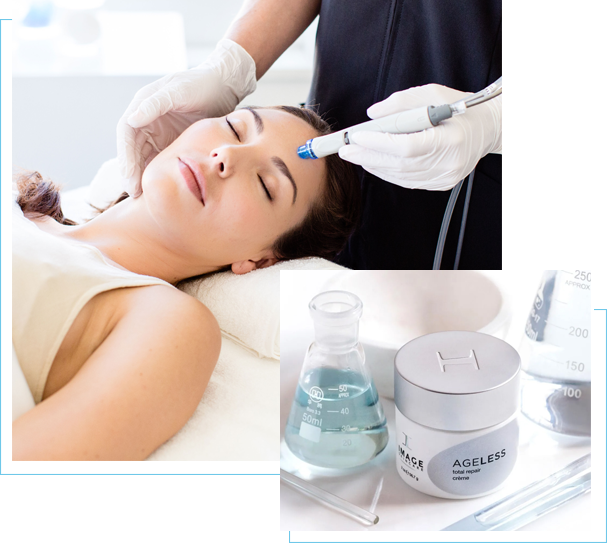
A One-Two Punch for Acne Treatment
I frequently start patients on a combination of oral antibiotics and topical medicines for their acne. The thought is that the oral antibiotic will help to put the fire out while waiting for the topical medicine to start taking effect. I also love benzoyl peroxide because we haven’t seen any evidence that bacteria develop resistance to it.
A recent trial called the ACCESS trial studied the best approaches for moderate to severe acne. Its conclusions are very similar to my own treatment approach, but there were several very useful findings in the study that I look forward to incorporating into my practice:
Questions:
When acne is being treated with an oral antibiotic, does adding a topical medicine make any difference?
As early as the 2nd week of treatment, patients using the combination approach were already doing better than those on just antibiotics. At the end of the 1st phase, 12 weeks, patients on combination treatment has 64% fewer acne lesions than when they started and almost 25% fewer lesions than patients who were just using oral antibiotics. 35% of patients using the combination were totally clear vs only 10% of the patient who just used the antiobiotic.
But I don’t want to be on antibiotics forever, what happens if I stop taking the oral doxycycline?
I agree, it is best if we can avoid long term administration of antibiotics.
So, they next looked at what happens to patients who have improved 50%. They separated them into two groups. One group continued the topical medicine and the other group used a plain cream (vehicle control). The 2nd group of patients started to see their acne get worse. However, the first group did really well. What is most impressing is that after another 6 months patients has 76% less cne than when they started.
How this affects my practice:
Putting the fire out is an effective idea. I will probably advocate this approach even more whenever it is feasible. A fairly short course of an oral antibiotic paired with a good topical medicine can form the basis for a long term improvement in acne.
The importance of the 3 month checkup. At this time point, the combination regimen should have led to at least a 50% improvement. If it has not, then changes need to be made. If it has, the antibiotic can be stopped and we should be able to continue with just the topical medicine with the expectation that acne will continue to slowly improve.
Mitigating the problems of antibiotic resistance:
Another important publication is the American Acne and Rosacea Society Pediatric Guidelines. They agreed that oral antiboics for moderate to severe acne is reason in pre-adolescent and adolescent acne, but recommended using BPO at the same time to decrease the development of resistance. This is based on several studies of BPO over the years that have taught us a lot about this medicine. First, the concentration of BPO doesn’t matter much for killing bugs and 2.5% works as well as 10%. Second, it doesn’t matter whether it is used as a wash or as a leave on topical medicine. Third, even once weekly usage of BPO makes a significant difference. Therefore, I try to include BPO in every regimen that includes an oral antibiotic because there is a lot of good data that it helps prevent the development of resistance.
Using BPO successfully
There are several problems with using BPO:
1. Maximum strength = maximum side effects
BPO is available OTC, but I have had a very hard time finding ones that I like. Most of the OTC formulations (Clearasil especially) incorporate the highest percentage of BPO that the FDA allows-10%. However, this doesn’t work any better than 2.5% and certainly causes a lot more redness, dryness, and even allergic reactions. More is NOT better.
My favorite OTC BPO is Panoxyl 4%, but it is REALLY hard to find.
So, even though they are OTC, I now prescribe BPO because it’s the only way to get the lower concentration products that aren’t as irritating. Fortunately, there are PLENTY of generic formulations available.
2. BPO is like Oxy-Clean.
From the perspective of organic chemistry both products contain reactive oxygen groups that readily donate radical oxygen. This is how BPO kills bacteria so effectively. Unfortunately, it also makes great bleach. You could try BPO as a stain remover, but I’d use Oxy-clean for that. Don’t use Oxy-Clean on your skin.
So we have to deal with the bleaching side effects of BPO.
If it is part of a cream or gel that you apply in the morning, you need to beware of the potential bleaching of clothing. This is most common with dark fabrics, but certainly doesn’t affect all clothes.
If it is part of a cream or gel that you use at night just buy white sheets and pillowcases or use linens that you’re willing to sacrifice.
If it is used as a wash, your clothes and linens are usually safe, but you’re going to want to get some white towels.
How to tell if you are allergic to BPO
Contact allergies develop when you are exposed to the same substance for a long period of time. Most people never become allergic to BPO, but it can occur, especially if you have been using very high concentrations of it.
I expect for BPO to make people a little bit red and dry. You can use a moisturizer to help with this. But if you find that within a few applications of a low concentration of BPO you are very red AND usually very itchy, there is a good chance that you have developed an allergy.


